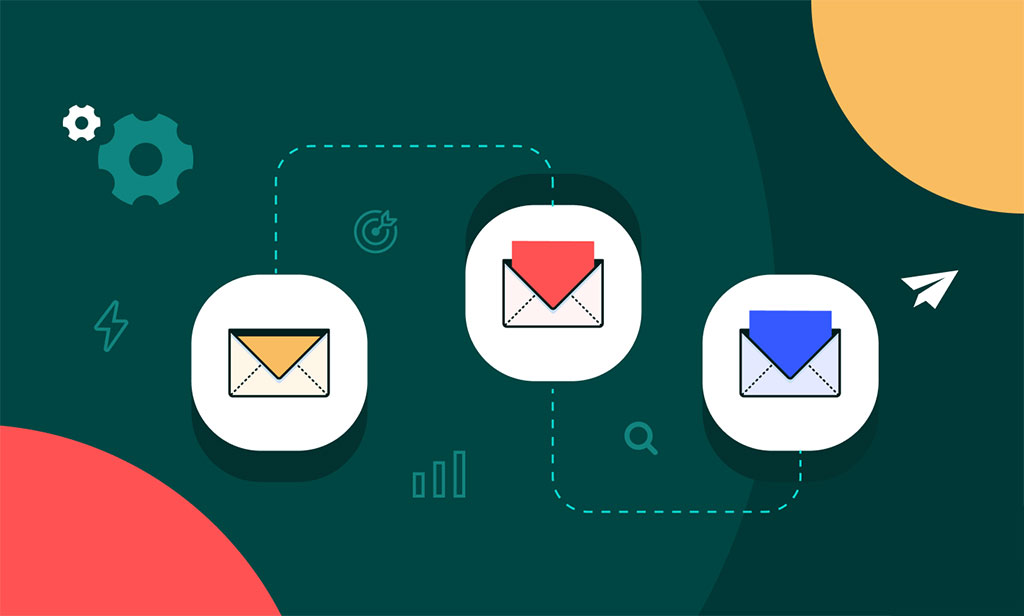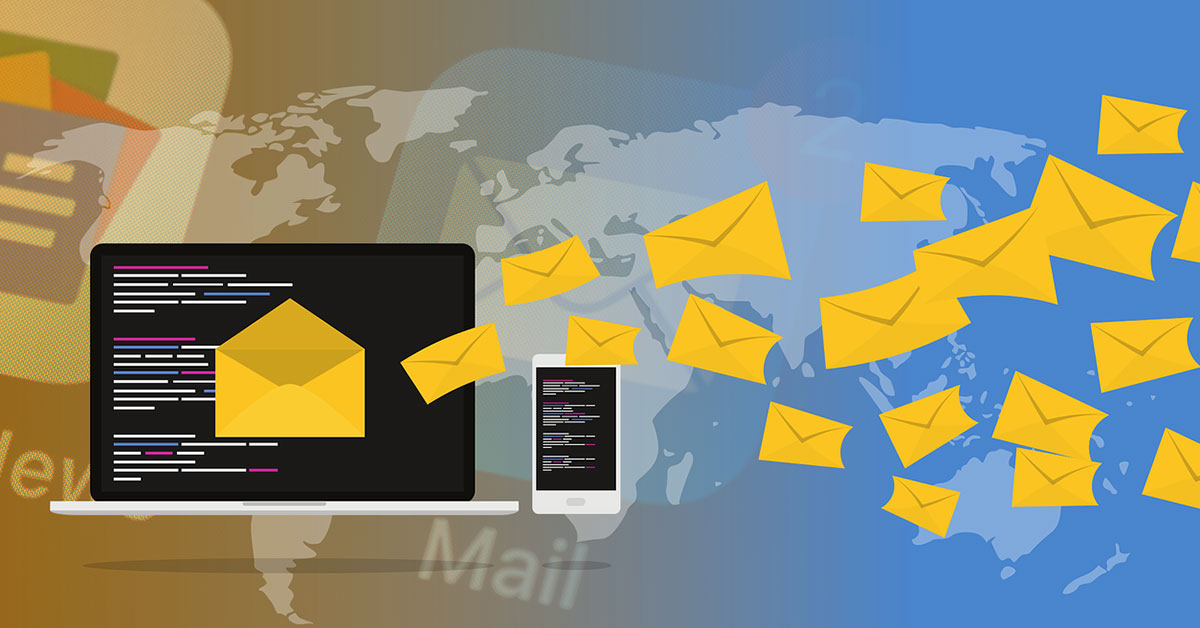Automation in Email Marketing is a powerful tool for businesses of all sizes. With an average ROI of $38 for every $1 spent, it’s one of the most cost-effective ways to reach and engage with customers. Email marketing allows businesses to build relationships with customers, promote new products or services, and drive sales, which is why it’s no secret why it’s so effective.
The role of automation in email marketing is to streamline and automate repetitive tasks, such as sending emails, segmenting lists, and triggering specific actions based on subscriber behavior. Automation not only saves time, but also helps improve the effectiveness of your email campaigns. By automating certain aspects of your email marketing, you can create more personalized and relevant emails that are delivered at the right time, increasing the chances of engagement and conversion.
In this guide, we will be exploring the different types of automation in email marketing and the benefits it can bring to your business. We will also be providing tips and strategies for setting up and best practices for automated email marketing. By following this guide, you will be able to understand how automation can help your business and how to effectively implement it in your email marketing efforts.
How does automation play a role in email marketing?
1. Types of Automation in Email Marketing

Email marketing automation allows businesses to automate certain aspects of their email marketing efforts, including sending emails, segmenting lists, and triggering specific actions based on subscriber behavior.
There are several types of automation in email marketing, including:
Triggered campaigns
Triggered campaigns are emails that are sent automatically based on a specific action or event, such as when a subscriber joins your list, makes a purchase, abandons their shopping cart, or reaches a specific milestone in their customer journey.
Drip campaigns
Drip campaigns are a series of automated emails that are sent to subscribers at specific intervals, such as daily, weekly, or monthly. Drip campaigns are often used to nurture leads or upsell to existing customers.
Behavioral-based automation
Behavioral-based automation is the process of sending emails based on a subscriber’s behavior, such as the pages they visit on your website or the products they have viewed. This type of automation allows you to create highly personalized and relevant emails that are delivered at the right time.
Transactional emails
Transactional emails are automated emails that are triggered by a specific action, such as a purchase or registration. They are used to confirming transactions, provide receipts, and send account-related information.
By using these types of automation, businesses can create more personalized and relevant emails that are delivered at the right time, increasing the chances of engagement and conversion.
2. Benefits of Email Marketing Automation

Email marketing automation offers a variety of benefits to businesses, including:
Saving time and increasing efficiency
Automation allows businesses to streamline and automate repetitive tasks, such as sending emails, segmenting lists, and triggering specific actions based on subscriber behavior. This saves time and increases efficiency, allowing businesses to focus on other aspects of their marketing efforts.
Improving personalization and relevance
Automation allows businesses to create more personalized and relevant emails that are delivered at the right time. By using triggers and behavior-based automation, businesses can send targeted and personalized emails that address the specific needs and interests of their subscribers.
Increasing engagement and conversion rates
By sending personalized and relevant emails that are delivered at the right time, businesses can increase engagement and conversion rates. Automated email campaigns have been shown to have higher open and click-through rates, leading to more conversions and better ROI.
Overall, email marketing automation allows businesses to save time, increase efficiency, improve personalization and relevance, and increase engagement and conversion rates. By implementing automation in their email marketing efforts, businesses can improve the effectiveness of their campaigns and drive better results.
3. Setting up Email Marketing Automation
Email marketing automation can be a powerful tool for businesses, but it’s important to set it up correctly to ensure it’s as effective as possible. Here are some tips and strategies for setting up email marketing automation:
Choosing the right automation platform
There are many automation platforms available, such as Mailchimp, Constant Contact, and Campaign Monitor. It’s important to choose a platform that meets the specific needs of your business and has the features and capabilities you need.
Creating and segmenting email lists
Before setting up automated campaigns, it’s important to create and segment your email list. This will allow you to send targeted, personalized emails that are relevant to specific groups of subscribers.
Setting up automated campaigns and triggers
Once you have a segmented email list, you can set up automated campaigns and triggers. Automated campaigns are pre-defined series of emails that are sent to subscribers at specific intervals, while triggers are specific actions or events that trigger the sending of an email.
Testing and optimizing automation
Once you have set up your automated campaigns and triggers, it’s important to test and optimize them. This includes A/B testing different elements of your emails, such as subject lines and headlines, as well as analyzing the performance of your campaigns to make data-driven decisions on how to improve them.
By following these tips and strategies, businesses can set up email marketing automation that is effective and drives results. It’s important to not forget testing and optimizing the campaigns, it will help to improve the effectiveness of the campaigns over time.
4. Best Practices for Automated Email Marketing

While email marketing automation can be a powerful tool, it’s important to follow best practices to ensure that your campaigns are effective and well-received by your subscribers. Here are some best practices to keep in mind when implementing automated email marketing:
Compliance with legal and ethical considerations
It’s important to comply with laws and regulations regarding email marketing, such as the CAN-SPAM Act, which sets out specific rules for sending commercial emails, including requirements for an unsubscribe mechanism and the inclusion of a physical postal address.
Providing an easy way to unsubscribe
It’s important to provide an easy way for subscribers to unsubscribe from your emails. This not only helps to comply with legal and ethical considerations, but also helps to maintain the engagement and relevance of your email list.
Avoiding sending too many emails
Sending too many emails can lead to unsubscribes and decreased engagement. It’s important to find the right balance between sending enough emails to keep your subscribers engaged, and not sending so many that they become overwhelmed.
Creating a consistent and visually appealing design
It’s important to create a consistent and visually appealing design for your emails. This includes using a consistent layout, brand colors, and typography, as well as optimizing images and infographics for mobile devices.
By following these best practices, businesses can create automated email campaigns that are effective, well-received by subscribers, and comply with legal and ethical considerations.
In conclusion, email marketing automation is a powerful tool for businesses of all sizes, and it’s essential to understand how to effectively implement it in your email marketing efforts. We have discussed the different types of automation in email marketing, the benefits it can bring to your business, and the best practices to follow when implementing automated email marketing.
As a reminder, the benefits of email marketing automation include saving time and increasing efficiency, improving personalization and relevance, and increasing engagement and conversion rates. By implementing automation in your email marketing efforts, you can improve the effectiveness of your campaigns and drive better results.
In summary, some of the key takeaways from this guide include:
- Understanding the different types of automation in email marketing, such as triggered campaigns, drip campaigns, behavioral-based automation and transactional emails.
- Recognizing the benefits that automation can bring to your business such as saving time, improving personalization and relevance, and increasing engagement and conversion rates.
- Setting up email marketing automation by choosing the right automation platform, creating and segmenting email lists, setting up automated campaigns and triggers, and testing and optimizing automation.
- Following best practices for automated email marketing, including compliance with legal and ethical considerations, providing an easy way to unsubscribe, avoiding sending too many emails, and creating a consistent and visually appealing design.
As a call to action, we encourage readers to take the time to implement the strategies discussed in this guide and start seeing the benefits of email marketing automation for their business. Remember, testing, analyzing and making data-driven decisions is the key to success in email marketing automation. Happy Automating!







